The Friday Film: The Rolleiflex 3.5F by Ibraar Hussain
This isn’t really a Gear Site, but, if people want to contribute stuff about gear then gear will be featured. To carry on the Gear tradition, I bought myself a precious little Gemstone of a camera.
For those interested in the Leica and rangefinder experience – I suggest you also look to the TLR experience and the Rolleiflex experience as it will give you a completely different feel and vision in your photography. Just owning a classic Rolleiflex is a pleasure in itself, and using one gives a feeling of excitement and productivity and the feel of it all being an event – even if the subject is your cat lounging around the sitting room!
There are many Rolleiflex TLR’s to choose from; Automat’s, Rolleicord’s, 2.8 Planar’s, Tele-Rolleiflexes and many special editions.
The Rolleiflex is still being made by DHW Photo http://www.dhw-fototechnik.de to this day, and is a work of art, with modern ground glass and super bright image – expensive, but cheaper than a Leica!
I bought myself a mark 1 Rolleiflex 3.5F – a Classic with a capital C and considered by many to be one of the best camera’s ever made.
A camera used by some of The Greats throughout the years and capturing some of the iconic photographs in history such as David Bailey, Richard Avedon, Robert Doisneu, Fritz hence, Eduard Boubat, Lee Miller, Diane Arbus, Robert Capa, Vivian Maie amongst many others.
And a Camera used by iconic movie stars and rock stars over the years .
I’m not saying owning one will make one great or into a celebrity! But it’s apiece of history which is still a joy to use and can yield lovely results on par with The Best. I’m no expert on Rolleiflex TLR’s but I do know there are many user groups and lists of serial numbers. Buying a Rolleiflex of this type is an investment too.
The value will only go up (depending upon the condition of your Rolleiflex) and one can treasure it as one treasures a Rolex or collectors watch. Anyway, I bought mine with a Rollei bayonet II yellow Filter, lens cap and a Rolleinar II close up filter – a two piece filter with lenses for both viewing and taking lenses.
The close up filter is called the Rolleinar and comes in many different strengths. The Rolleinar I will enable you to shoot head shoulder shots with the 75mm f3.5 standard lens.
The Rolleinar II which I have will be face shots – or close-ups of other subjects.
I wanted a Rolleinar I but for some strange reason, the Bay II Rolleinar’s (along with ALL Bay II accessories) are 3 to 4 times as much as anything Bay I or III (Bay I for the Rolleicord Tessar and Bay III for the f2.8 80mm Planar) so I picked up a bargain Rolleinar II.
If you have never used a TLR before, it’s easy peasy to use. Flip open the waist level finder to look into a big image of the square scene. Focus using the knob on the left, wind the lever forward and then back, and trip the shutter using the release on the bottom right front of the camera.
It is so easy and so straight forward without any settings getting in the way.
Mine is metered, the array of glass bulbs below the Rolleflex logo is where the selenium meter captures the light. I didm;t bother with the inbuilt meter and just used Light Meter App on my iPhone for the one roll I shot with this camera. The dials at the front are for Shutter speed and Aperture.
I took mine along to my favourite place – Brecon in Wales a few weeks back, and snapped a roll of 10 exposures at the ruins at Tretower Castle. A lovely desolate place in the midst of the Beacons. I shot a roll of Rollei Pan 25. A very slow 25 ISO BW Film which is basically Agfapan 25 rebranded.
I developed the roll in an Agfa Rondinax 60 daylight Tank – great idea, if a bit temperamental, with Rodinal developer. I Scanned using an Epson 4990 flatbed and used Photoshop CS4 to process.
The negatives were lovely with high contrast and rich blacks, and I was pleased with every shot (I wasted 2 by exposing them accidentally in the Rondinax while loading).
I include a selection of snaps here (minus family snaps of me and the Missus).
I have owned a TLR before: MPP Microcord TLR reviewed here on stevehuffphoto.com http://www.stevehuffphoto.com/2012/11/02/the-mpp-microcord-tlr-by-ibraar-hussain/ But this was my first Rolleiflex TLR and it is a keeper and a pleasure to use and to own.
All photo’s of this first test roll.
Rolleiflex 3.5F Mk 1.
Carl Zeiss 75mm f3.5 Planar
Rollei Yellow Filter
Rollei Pan 25
Rodinal.
Rondinax 60 daylight tank.

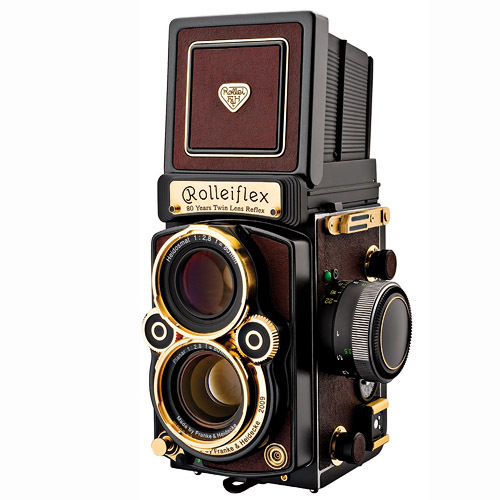
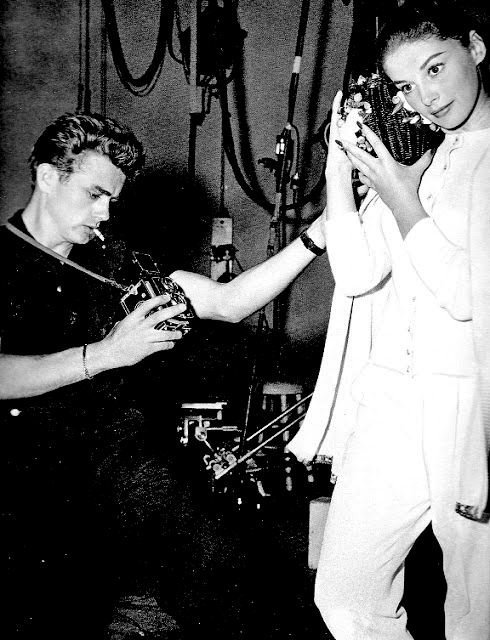
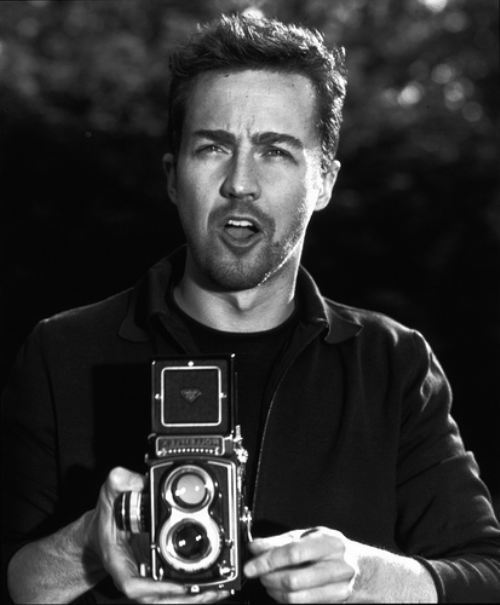
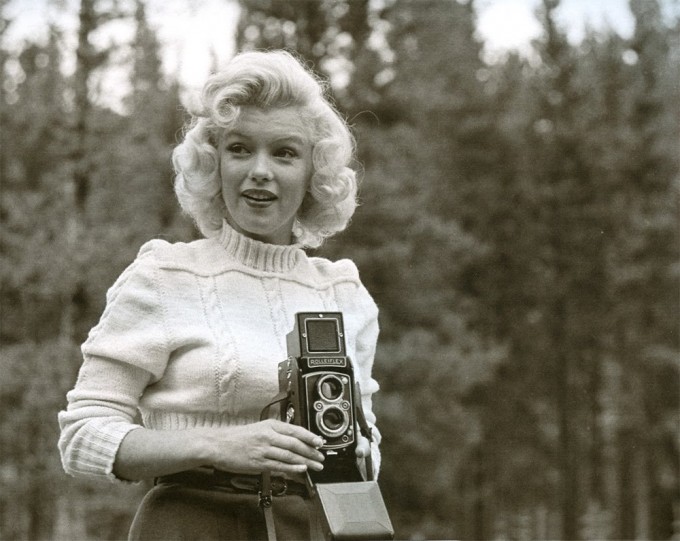
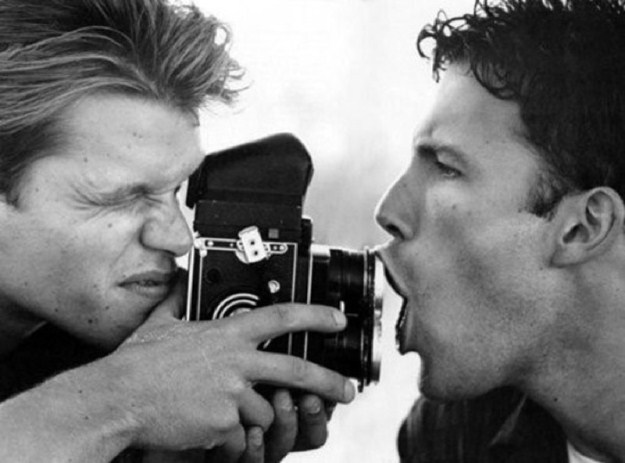
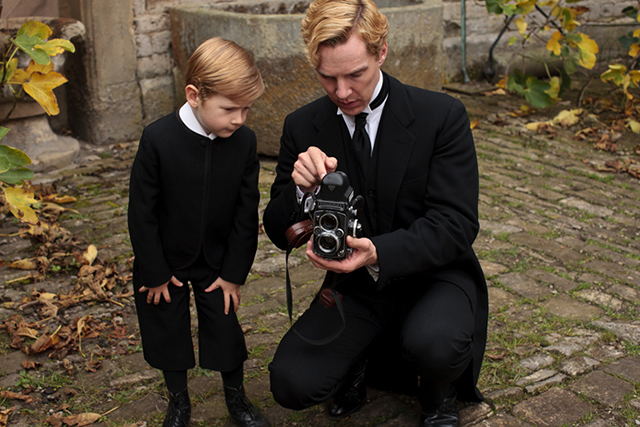
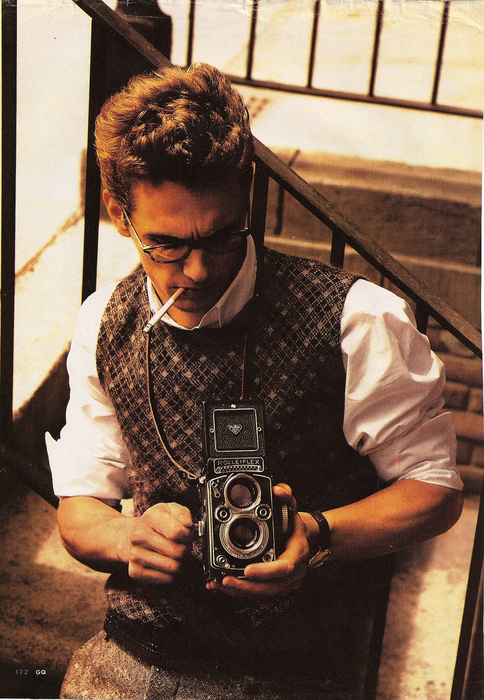
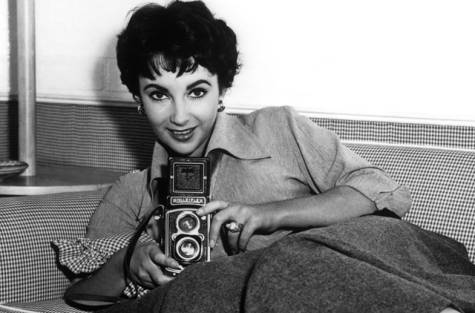
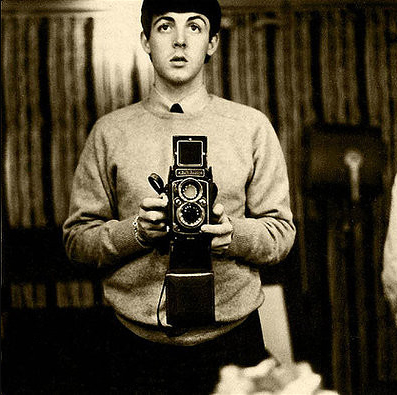
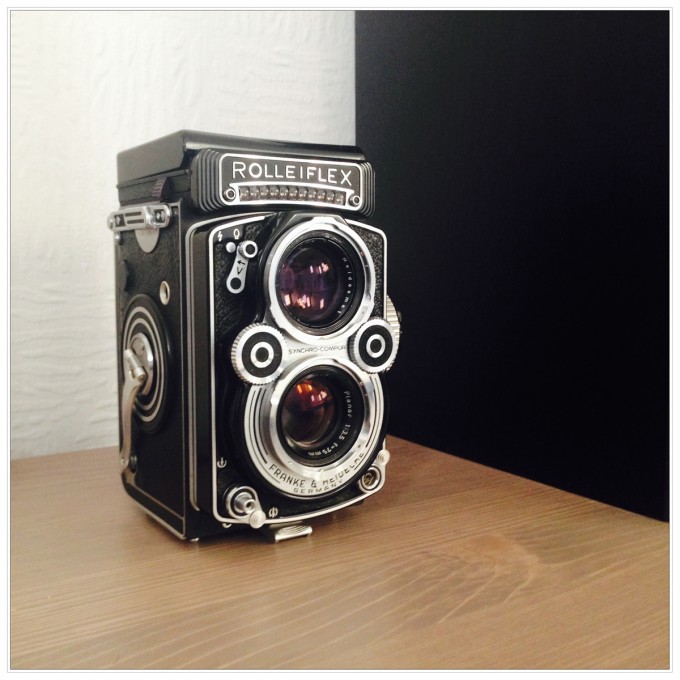
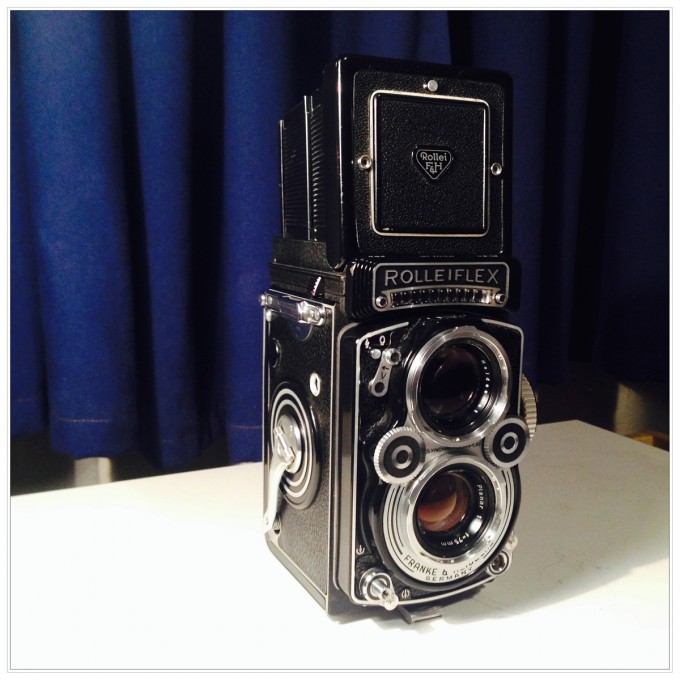
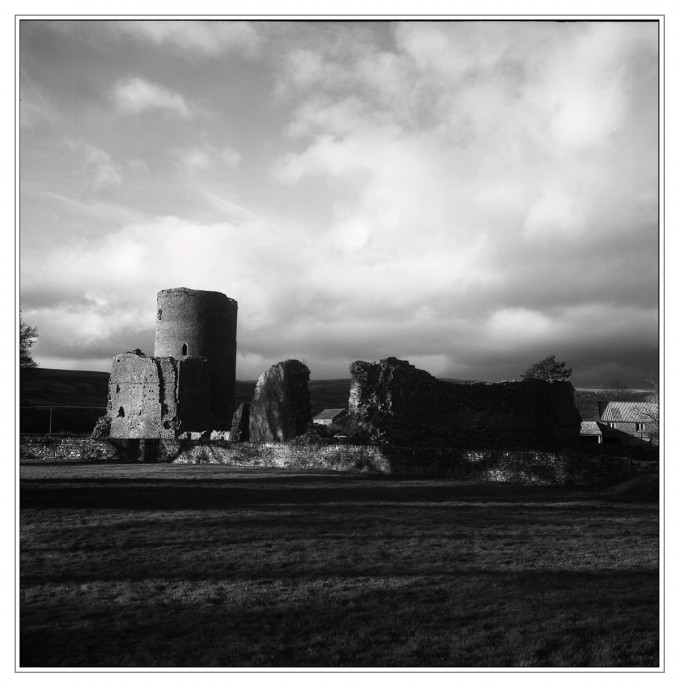
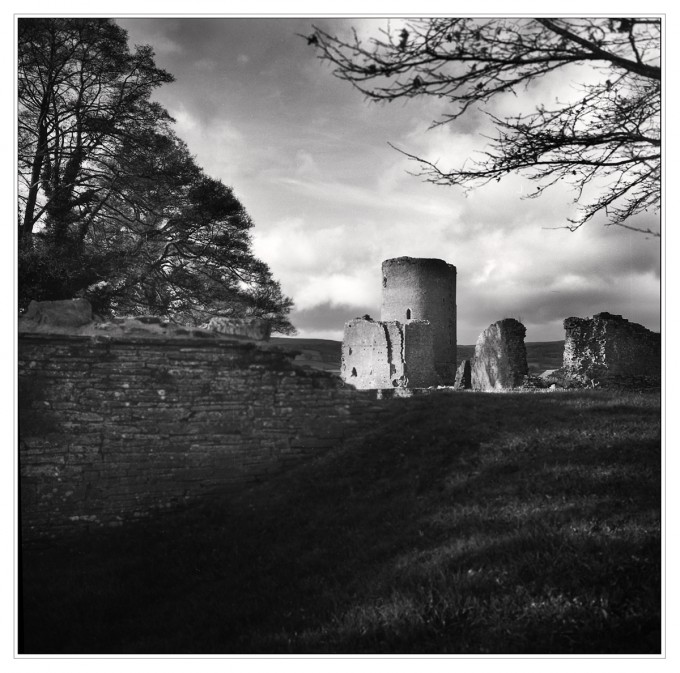
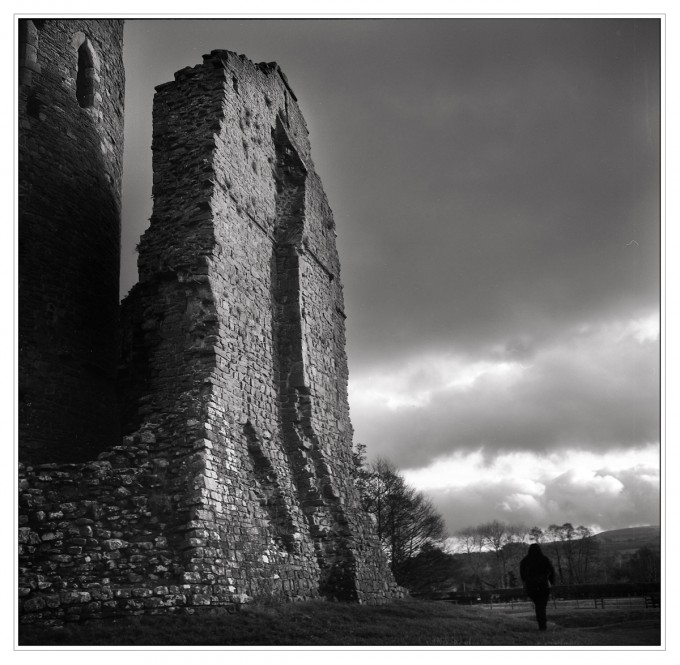
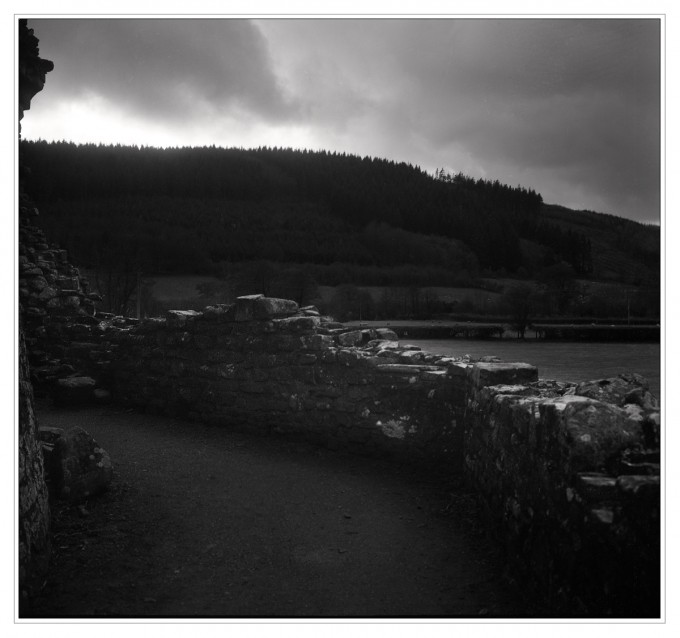
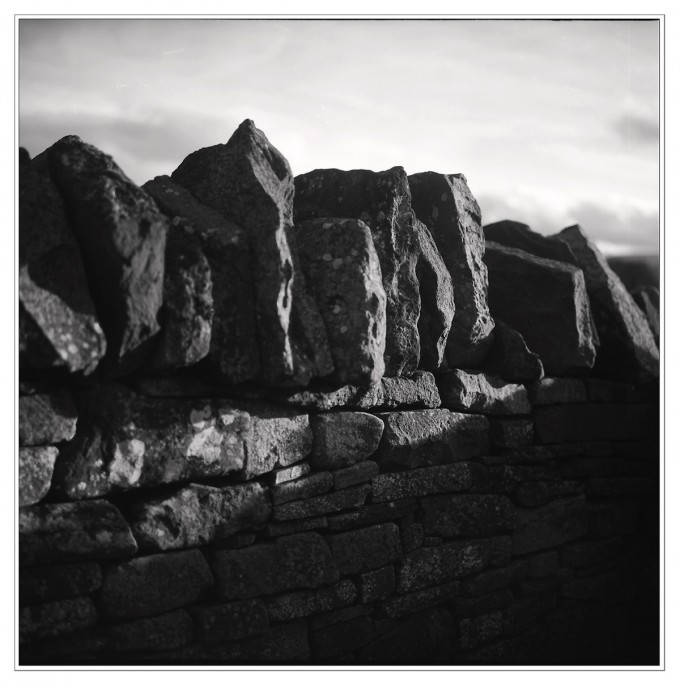
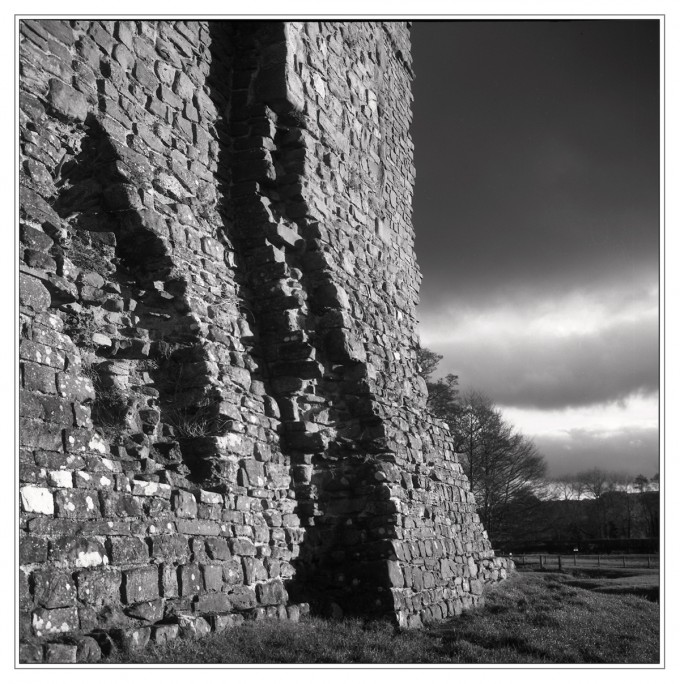

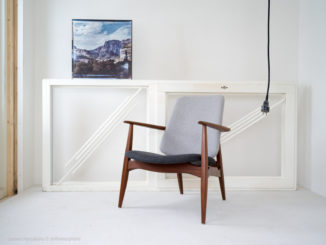
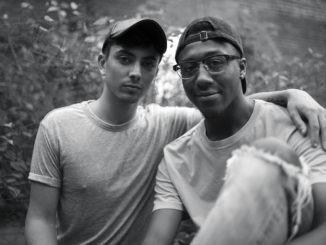

You Guys are lucky seems here in Ontario Canada that the only way anyone can purchase this particular camera is via ebay . Because of reading of the disappointments of some users of this method I certainly would want the item that I am purchasing in my hand first.
For those interested in Pixel and Resolution peeping and a comparison between the Rolleiflex f2.8 80mm Planar, the Rolleiflex f3.5 75mm Xenotar a Hasselblad 500C/M with 80mm Planar T* and a Mamiya 7 with 80mm L.
http://www.hevanet.com/cperez/test/fourcameras.html
I had a Tessar for a while, and it was utterly delightful: 100% mechanical. However, I have become old and my eyesight, never great, is less so now. I find all waist-level-finders hard to focus. There are lighting situations where it’s hard to even see the class. As a torso portrait camera, used on a tripod, it may well be perfect, but I found it too hard to manage for general purpose medium format photography. I also found it somewhat hard to hold steady. I now shoot a Mamiya RZ on a tripod with a prism finder for medium format. I may swap it for a Hasselblad with it’s prism finder. The classic Zeiss look can’t be beat.
The WLF on the Planar and ground glass – especially on newer Rolleiflex’s (when I say newer I mean later ie. 3.5F ) are much brighter and clearer than Rolleicords and Tessars.
Hi Ibraar,
Checked out your link regarding the MPP -excellent work. I am a street photographer who uses mostly digital cameras -a Leica M8 and on occasions a Lumix G1 (on loan). My experience with film is nostalgic at best. It is a different experience and process which (when done well)results in a beautiful organic feel.
I recently completed a short course in photographic portraiture and lighting and the teacher one day brought in his old Bronica SLR (the one with the Nikon lens).Everybody in the class loved using the camera -and enjoyed looking at the beautiful images it had produced. The teacher is a fine art photographer who has had exhibitions world wide-yet he has amongst his arsenal of digital equipment an old camera -for that certain look which he might use to suit a particular project.
Seeing and using the camera was a wonderful experience for all the people on the course -especially the younger people who may not remember film’s hayday.
So I think it is a very worthwhile enterprise that you do -telling us about all those wonderful cameras of old -ones which produced iconic images like the Earth from space-Buzz Aldrin on the Moon with Neil Armstrong’s image reflected in his visor.
So keep up the good work, who knows you may be inspiring some young artist to try some way to see the world anew with the old.
Best Wishes Fergus
Fergus, thanks for the positive message my friend.
I’d love to see a revival of the Rolleiflex TLR’s and the younger lot taking great pleasure in the Art of photography and in the use of these gems. I will continue to send Steve stuff to publish which I hope he likes and publishes.
Thanks Steve!
Excellent shots. I especially like the second. Reminds me how fantastic that square format works, and how much I love Wales. Such a hauntingly beautiful place.
The only thing I do not like is the gold color. Because it looks like bling, and I do not want to have a camera to die for. If you get my drift.
Karl,
The standard camera is what most people get – its the classic black leather with chrome trim.
Eric
Just had another look at http://www.dhw-fototechnik.de/ and their new Rolleiflex’s.
Including the new Hy6 SLR.
Works of art, and they should be commended and supported for still making new Film bodies and continuing to make beautiful German TLR’s.
I think these camera’s should be experienced by new younger generations who I am sure will ove every second of it – gear heads included!
Now I wish they would send Steve a review example or either…..
As their US dealer, I’ve got a Hy6 Mod2 demo camera that I’d be happy to send Steve for review. I also have my own personal FW TLR that I’d be happy to send along. I’m in San Francisco, so anyone that would like to check out the Hy6 Mod2 or the new TLR’s just shoot me an e-mail through my site.
Eric Hiss
Rolleiflex USA
http://rolleiflex.us
That’d be absolutely brilliant.
The Hy6 is something I’d consider besting the Contax 645 and not many Camera’s could do that!
Steve, would love to see this.
By the way, my Zeiss Gallery:
http://zeissimages.com/standardgallery.php?puid=2945&showall
Flickr:
http://www.flickr.com/photos/71817058@N08/
Loving the Film Friday posts – and great to see these wonderful old classic cameras in use! As a relatively recent user of medium format I wholeheartedly agree that it’s something well worth trying, with a very different approach required than 35mm.
Thanks for sharing!
Great article! And just to add a little more information for those interested in new TLR’s. There are four models: The classic FX with standard 80mm lens, the wide angle FW with 50mm lens, the telephoto FT with 135mm lens, and the newest model the FX-N with 80mm lens and close focusing ability. All of the new models come with DHW’s best focusing screen and electronic exposure metering and TTL flash shoe metering for when you use a Metz flash. As these are still built to order, you can choose a variety of custom options such as the gold trim and custom leather color as shown in the picture in the article. Also available are custom engraved identity plates that fit on the camera near the film winder crank and customers can also order the camera with a custom serial number up to 9 letters and numbers. Prism finders are still produced as well as many other accessories such as hard and soft leather cases. The battery for metering lasts a very long time – several years and the camera will operate without it. You can download a brochure on the new TLR’s from my site.
Eric Hiss
Rolleiflex USA
Eric, I’m honoured to have my article read by yourselves!
Thanks for the comments – a shame my poor photographs couldn’t be more worthy of the Rolleiflex.
Watch this space though, in April I’ll be going with my dad to the Karakoram and Himalaya with both my Rolleiflex 3.5F (loaded with Rollei Pan 25 Film) and my Rolleiflex 6008i (with Colour Film Fuji Velvia 50 and Agfa Ultra 50) and will surely send my results to Steve to see if he could kindly publish them!
Seems right to use the Rolleiflex’s to shoot Nanga Parbat – A German Mountain for German camera’s.
My Rollei must the same model. It looks identical. My father bought it just before I was born and used it professionally. It still works like it did out of the factory. Superbly made cameras!
You should have a go with the built-in light meter. It’s a bit quirky but mine is very accurate. You just have to remember to tip the camera down a little if you are outside so the sky doesn’t affect metering too much.
The other thing worth noting is how gentle that shutter is. 1/15 of a second with no anti-shake is no problem at all, especially with the camera braced against your body, which is easy as you look down into the viewfinder.
I don’t really use my Rollei much. I can’t compose “square” easily, find the reversed image awkward and don’t have a medium format scanner. When I do use it, though, it feels like a treat. Thanks for the reminder.
I love my Rollei 3.5! Just takes some getting used to looking at the reverse image on the focus screen. Try panning a moving vehicle while looking at the focusing screen 😉
I wish I got more than 12 shots on a roll, but talk about a meditative process!
I’ve never developed medium format film, but I have been practicing with my 35mm film and I’m getting ready to pull out those reels and try some medium format soon!
Love the images you posted — nice and moody. In the era of “instagram” and the resurgence of square prints, it’s nice to be reminded of the images from the Rollei — a square image packed with detail and mood.
Thanks jacky.
120 is probably easier to develop than 35mm as I think opening a film canister is a royal pain in the butt.
Focussing moving objects is, I agree, tricky, so I tend to go for static stuff haha!
I did take some lovely portraits of my missus with the roll, she won’t allow me to get published though – nothing like real Square pictures I agree.
By the way, I do recommend the Agfa Rondinax 60 – very easy to develop with.
Never opened 35mm canisters, used to have a little tool to grap the leader and draw it out. You would fit it to the 35mm canister, then put the lot into a dark bag and pull out the film. It’s easier to develop 120 as there is a lot less film to wrap on the spool, its bigger and even by touch its easier to know its on right. With 35mm film, sometimes it’s possible to wrap the film into the same part of the spool twice, which ment the film did not develop properly at both places. Practice and awareness of the problem does help, but I learned that the hard way.
Own both a 2.8f planer and a 3.5f 75mm Tessar. Love these cameras.
Super glimpses of Wales – and they are even better with a fraction, just a fraction! less contrast and shadow.
And the information about the cameras is fascinating and well-presented – thank you for your time and trouble.
Thanks John! Appreciate it. Wales is my favourite place, and the place where I shot my last roll of Kodachrome – worthy indeed!
I recently got a Rolleiflex 80 2.8 planar. I was worried I would have a difficult time using it at first but surprisingly, it felt natural in my hand, the shutter release was perfectly placed, the screen was very bright and clear. Just had to get used to the reverse image. I shot some Portra 400 on it and was amazed at how sharp the images were.
@ Al, it depends where you are. If there are no local places in your town you can use mail order services to get the film processed. I send mine to thedarkroom.com and so far have been pretty happy with them. They provide free mailers, and you get it done in a couple of days.
@Ibraar – excellent stuff! A huge bonus I have found from using the Rolleiflex is complete strangers love having their pictures taken when they see it. They think it is an event and want to be part of it. Very different reaction to using a digital camera.
“The Rolleiflex is great if what you want is an luxury tchotchke. If you want to take pictures, it’s a bit of a PIA as you have to juggle it from hand to hand to focus and then advance the film”
No issues using mine. Left hand focuses, right hand advances film. No juggling here. It is incredibly well made and takes fantastic pictures. The Zeiss Planar lens in mine is something else.
What matters is the result. And Rolleiflexes give wonderful results. it is a bonus that they are a joy to look at and hold.
True say, I agree 100%.
Using a Rolleiflex is an experience in itself. And I urge everyone EVERYONE to go and buy one and use it and enjoy the experience. fords.co.uk have a Mint Rolleicord Vb type II for £220 – you can’t even get a bottom end DSLR or Mirrorless for that much, and the quality of the ‘Cord kills anything costing £220
ABSOLUTELY BEAUTIFUL CAMERA AND PHOTOS. A BY GONE ERA.
as the vintage photos illustrate there’s actually a long tradition regarding the use of cool camera gear in an attempt to enhance ones own persona . . . .
True say, but fat chance of that with me though! I look like a plum with a TLR round my neck.
I don’t like drawing attention to myself, that is the only problem i have with the Rollei which otherwise I love using.
and there’s a palpable difference between people who carry gear that they use for specific reasons related to the craft of photography and those who carry gear because they think it will make them look like the former . . . .
Back in my university days my best friend at the time who I was taking photography classes with had a Rolleiflex 2.8F that I borrowed often. It was probably the camera I had the most fun shooting with that I can remember.
These are wonderful photos -but to my eye they seem to be a little soft? Maybe camera shake or a scanning issue.I have never used a Rolleiflex TLR but I know they produce beautiful sharp contrasty images as a friend had one years ago -still has it I think (I hope).Some people say the Zeiss Planar versions are better than the Hasselblad -high praise indeed.
Curiously enough his one had the Tessar lens and it did exactly what a previous contributer says namely- delivers images with great dept and feel to them in black and white especially.
I think medium format cameras produce superb black and white images, much better than the best digital-that I have seen anyway. You must print these images old style as flatbed scanning does not always do them justice.Find some really competent fine art printer to do your selected best images old style in a darkroom -you will then appreciate them at their best. Give it a try!
no. 4 is soft. But I’m not sure about the others. Bear in mind, these are nothing more than test snaps.
Fergus, I print at home, I have a darkroom built in the loft. But these aren’t worthy of being made into prints.
The only square photo’s I have ever printed were some of my MPP Microcord TLR shots – which I am very proud of http://www.stevehuffphoto.com/2012/11/02/the-mpp-microcord-tlr-by-ibraar-hussain/
I tend to print on Adox MCP (resin coated) or for very special one off prints on Fibre (Ilford FB warm tone)
I completely agree with you! While I had the budget for a Planar model, I specifically sought a mid range Rolleiflex T for the humble 75/3.5 Tessar. With B&W film, which I predominantly shoot, I really much prefer the rendering of the Tessar. For color film, I’d probably fork out the money and grab a 2.8 Planar model.
Cheers Ibraar! Another great contribution to this site! The Rolleiflex is, without hesitation, my absolute favorite camera!
Ugh. My comment above was suppose to be a reply to ‘arealitystudio’s comment above (very first comment).
Thanks man, the uncoated Tessar is perfect for BW.
I have a cheap Yashica Mat TLR from around 1958 and it’s such a fun camera! The hardest thing with TLR is getting used to the reverse image in the view finder but that’s part of the joy.
Keep Friday Film days going!
The Y Mat was/is an excellent camera. Its lens is a Tessar formula and sharp as. Hard to beat.
The Rolleiflex is great if what you want is an luxury tchotchke. If you want to take pictures, it’s a bit of a PIA as you have to juggle it from hand to hand to focus and then advance the film. Keeping the film flat is also a problem as it has to go through a 90-degree bend before reaching the film gate, resulting in reduced sharpness if the film has taken a “set.” (Not that you’ll notice if all you’re doing is making scans.)
The Minolta Autocord is an all-around better design (focus with either hand via a lever under the lens; film path redesigned) but of course it doesn’t have the celebrity cachet or gold trim…
Hi mate, I disagree, I think the Rolleiflex is beautifully built much more so than the Minolta, and the optics far exceed the Minolta’s. Using a TLR can be daunting for the novice, but with a few hours practise things are easy and as quick as could be for the type of photography which will be attempted with a TLR, and the hardest thing would be self consciousness and the feeling that you’re being watched when using this in public with people around – it attracts so much attention that at times using a TLR I feel like a right twat. (I’ve only shot 1 roll through this, but my Microcord was much loved and used)
Gosh yes!. Even my Mamyia (sic) C220. Was better then the Minotla.
@Karl: I take it you’ve not used a Minolta Autocord. I have a Mamiya C33 (with a relatively newer lens) and a 1958 Autocord — I can’t see Mamiya being better than my Autocord, by design (except for the interchangeable lenses) or performance.
@Ibraar: I will agree that the Rolleiflex is a better made camera. I can’t compare the optics as I don’t own a Rolleiflex but from what I read on the “Internets”, the Autocord’s Rokkor lens (itself a Tessar design) is as good, if not better than the Tessar/Xenar lenses.
Design-wise, I agree with JL Williams that the Autocord is better, at least from a usability point of view.
Anyway, these are all opinions. I like my camera and you like yours–let’s leave it at that.
thank you for this review-explain and these samples of the first roll !
Where can one have the film processed? Yes it can be done at home, but if we wanted it done professionally, where do we go.
I had a Yashica D and mourn its loss.
You could do it at home. It doesn’t require much to do so. A little plastic Jobo drum and some chemicals. Plus a room that can be dark or one the little tents that allow you to put your hands in there. I have done that for years and it was very satisfying to see the negatives being done by yourself. But you can drop it off at any commercial photolab. Have a look if one still exist in your city. There are mail-in options as well but that may cost a bit more. D!RK
Lazy solution is Ilford XP2. BW film for C41, still available in 120 format. So any photo lab should be able to process.
XP2 is a very good shout, not only can it be lab processed as colour film is, it’s a great looking film in its own right and very forgiving with a wide exposure range.
Of course there is still the issue that most labs only process 35mm so you’d still be looking for a specialist shop.
Home dev is the way forward! It’s daunting at first but it needn’t be, once you’ve gone down this road you won’t want anyone else processing your film! Stand developing is especially easy and forgiving, using water as a stop bath and only requiring a very small amount of developer, your chemicals will last you for months if not years.
Al
The only way to get Film processed Professionally is by yourself at home. No lab will give you the results you’ll get at home.
A lab will dunk your Film in generic BW chemistry and the results are going to be pretty dull and lifeless – I know as I have used a few BW labs including Metro imagine – a pro Lab in London.
The easiest way is to go to Ilford’s website and have a read – they recommend Ilfotec DDX and a roll of Ilford Delta 100, which is a very good combination and easiest to use.
There are a few professional labs in Amsterdam that are actually willing to tell you how they develop (f.i. D76 or HC110), and you can give them instructions as well; push, pull, develop for low or high contrast. Very good results. So no, I disagree.
Far,far better to do the film processing at home. You know the subject matter, exposure and lighting when you took the shots and now you need to select the type of developer, dilution of developer, amount and frequency of tank agitation and the time of developing (best not to change developer temperature, 20C, if possible).to bring out the tones and contrast you want in your prints (next stage).
A shop “professional” job will be a much greater compromise.
I own a Rollei TLR and I love it to death.
I actually recommend people look into the cheaper “Tessar” lens version. Though it is technically an inferior lens I think it renders scenes in a very classic sort of way that is very appealing when combined with black and white film and is far cheaper than the Planar versions.
Hi mate, agreed. The Rolleicord can be bought for very little money and stopped down is every bit as good as the Planar.
£200 will buy you a Mint condition Vb Type II and accessories for these are widely available and cheaper.
Or an Automat. I went for the 3.5F type I as it is an investment and iconic with more pedigree than any other I think. Plus 75mm is better for me than 80mm on the 2.8 and the camera is lighter than the 2.8
You were also able to get an F3.5 Xenar, Schnieder (sic). I was told that the F/3.5 Xenar and CZ Planar were a little sharper then the F2.8. I also used a Ziess Ikon 6×6 cm folding camera. It had a Tessar, it made very good images. Never did own a Rolli, my uncle had one.